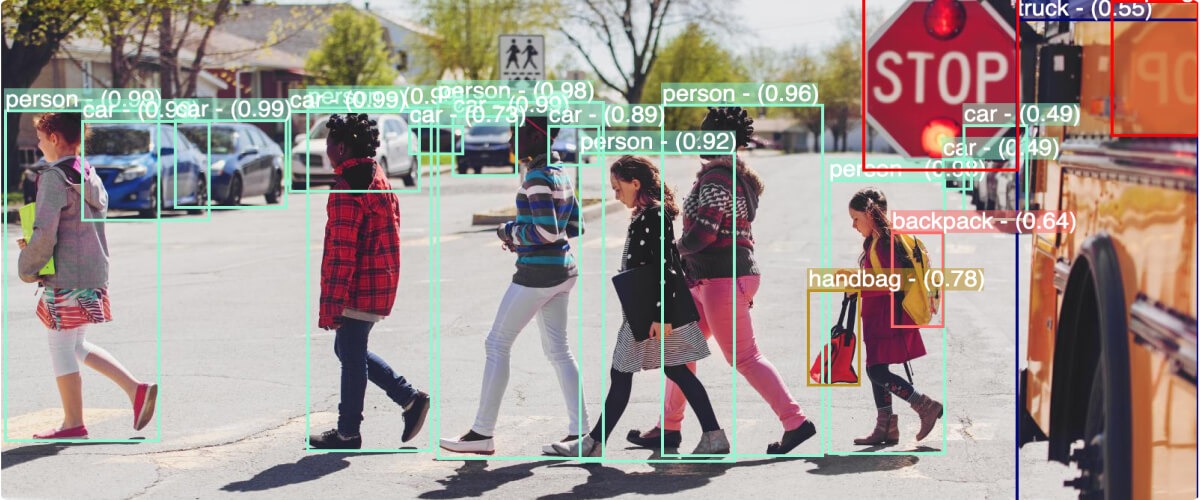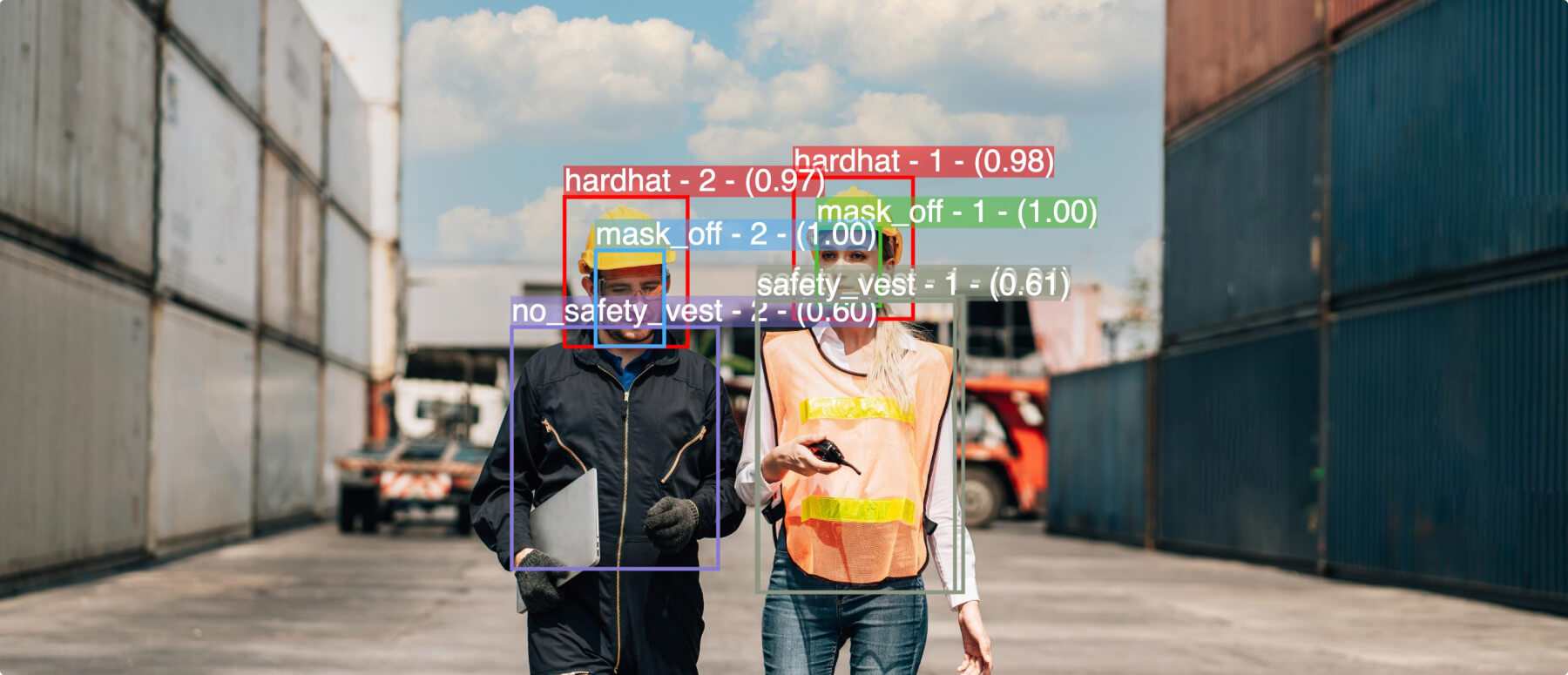The reasons for AI project failure are numerous, diverse, and complex. One of the biggest causes, however, is lacking the necessary technical skills—whether from in-house data scientists and machine learning engineers, or from a strong third-party computer vision consulting partner.
AI Success With Computer Vision Consulting
Despite the enormous potential of state-of-the-art computer vision and machine learning technologies, many businesses are still struggling to fulfill their expectations. According to a 2019 report by Pactera Technologies, 85 percent of AI projects ultimately fail. Another report from Dimensional Research found that nearly 8 out of 10 organizations using AI and machine learning say that their projects in these domains have stalled.
So, with these statistics in mind, how can you beat the odds and make your own computer vision project a success, without having to get a triple degree in the fields of computer science, computer engineering, and image processing? While it’s never a guarantee, there are a number of actions you can take to dramatically improve the likelihood that users will adopt your computer vision solution.
Below, we’ll go over 5 steps to accelerate adoption, based on our years of computer vision consulting expertise.
Computer Vision Consulting Step 1: Understand the Potential
The first step is to understand the potential that computer vision, AI, and big data can bring to your organization: for example, using computer vision for real time analysis of medical imaging, or for improving the quality of computer graphics. This means a careful and considerate assessment of your existing processes, workflows, and pain points.
From there, you can highlight a few key priorities that you plan to focus on. Doing your research and finding a case study for companies in a similar position and industry can help you set your expectations for the project appropriately.
According to the consulting firm McKinsey & Company, companies that focus on a few clearly defined themes and priorities during digital transformations are 1.7 times more likely to have the project exceed their expectations. Understand how your chosen initiative will impact your broader business strategy—for example, how it can help you obtain a competitive advantage, or improve your customer experience. Getting all hands on deck and everyone in agreement—from key decision-makers like managers and executives, to the workers in the trenches—is crucial to ensure the project’s success.
Computer Vision Consulting Step 2: Plan a Deployment
From there, your next step is to plan and execute the roadmap you’ve created for the project. Having the right mix of people and skills is an essential qualification—but unfortunately, one that too many businesses aren’t able to meet. According to research by Boston Consulting Group, only 1 in 4 organizations have access to the talent they need for a successful digital transformation.
Committing to visibility and transparency throughout the deployment process will be critical, so that key stakeholders can understand what’s going on at all times. The same McKinsey study also found that companies whose senior leaders make digital transformation a “top priority” are 1.5 times more likely to see results that beat their expectations.
Computer Vision Consulting Step 3: Train the System
Like children and dogs, computer vision models must be well-trained. The training process can mean the difference between a model that achieves world-class performance, and a model that performs barely better than chance.
The sub-steps required in the process of computer vision training include:
- Sourcing and/or generating a large, diverse dataset.
- Dividing the original dataset into training, validation, and test sets, each one representative of the larger dataset.
- Selecting the right deep learning model architecture.
- Training the system, assessing its performance on the training and validation sets, and adjusting hyper-parameters such as the length of training or the size of the model. This cycle is repeated as necessary until you obtain a satisfactory level of performance.
- Assessing the system’s final performance on the test set, which thus far the trained model has not seen.
Computer Vision Consulting Step 4: Prove the Concept
Once you’ve gained some confidence in your trained computer vision system, you can dip your toes in the water by deploying it as a proof of concept (POC). Having a successful POC will ensure you’re on the right track, and can help seal the deal for stakeholders to invest more time, money, and resources in the project.
To identify the best choices for a proof of concept, make sure that the domain in which the project will be deployed is relevant to your business strategy as a whole. Try to strike the right balance between a domain that’s adequately complex and relevant, without being too difficult to implement. In addition, your choices of metrics and key performance indicators (KPIs) should be easily measurable, in order to understand the impact of the project.
Computer Vision Consulting Step 5: Generate an ROI
Last but certainly not least, your computer vision project needs to generate a return on investment before it can be judged a success. Patience may be key here: many tech executives expect the ROI of their AI projects to take as long as 3 to 5 years.
Determining the ROI of computer vision and AI initiatives may include, but is certainly not limited to, cold financial figures. The factors below are just a few to consider when assessing a project’s ROI:
- Savings in labor costs by automating manual work, and/or the benefits of redirecting human employees to higher-level activities.
- Cost savings as a result of issues such as bottlenecks, downtime, and maintenance.
- Providing higher-quality products or a better customer experience.
- Improved safety and security measures.
- The benefits of making your organization more flexible, agile, and adaptable.
Conclusion
By following the 5 steps above, you’ll find that your computer vision project will be a lot easier to implement—and much more likely to succeed. Building your own computer vision solution can be complicated and challenging, which is why you can improve your experience with the help of computer vision consulting experts like Chooch AI. The Chooch AI platform is a user-friendly, all-in-one solution for building and deploying computer vision models, from data collection to training, that has helped countless organizations achieve their computer vision and AI goals.
Still in the research stage for your next computer vision project? Feel free to ask us for computer vision consulting, essentially a chat about your needs and objectives for computer vision.










